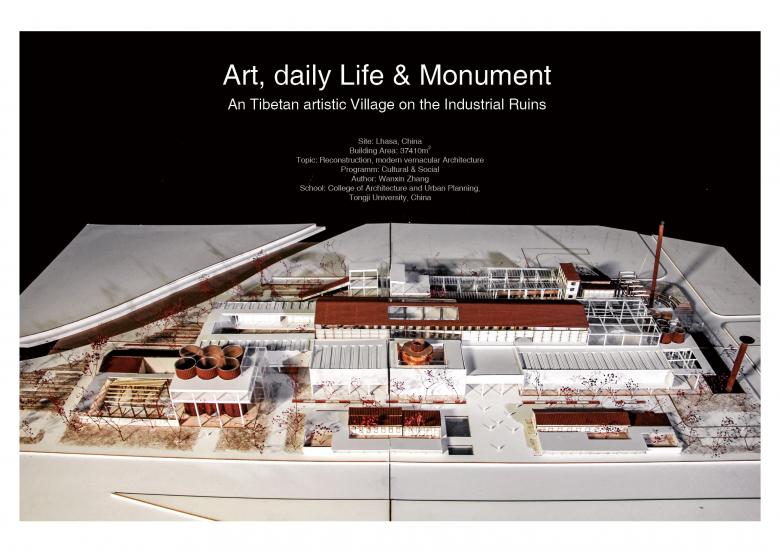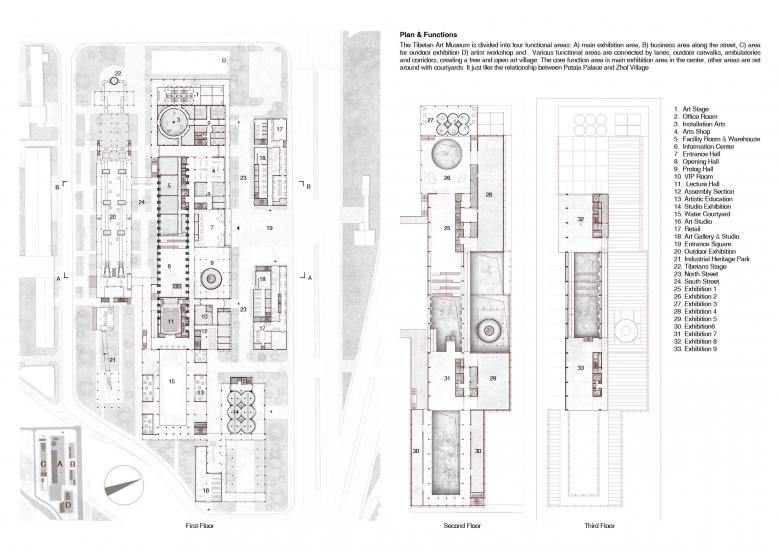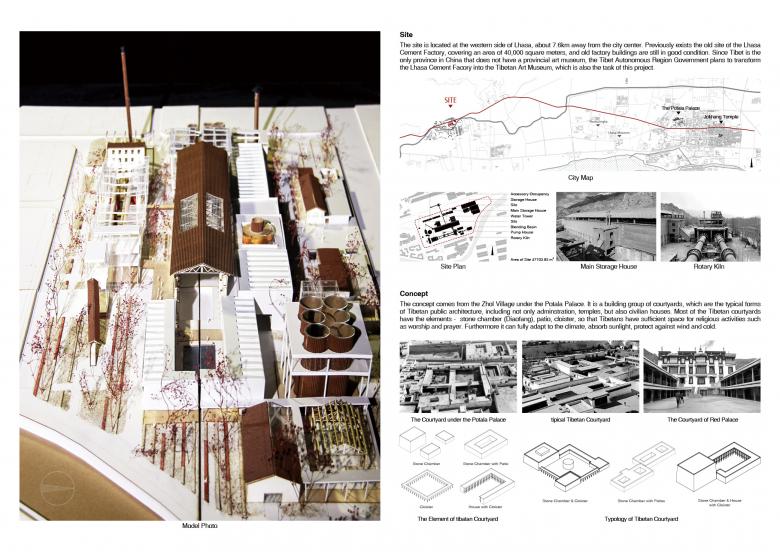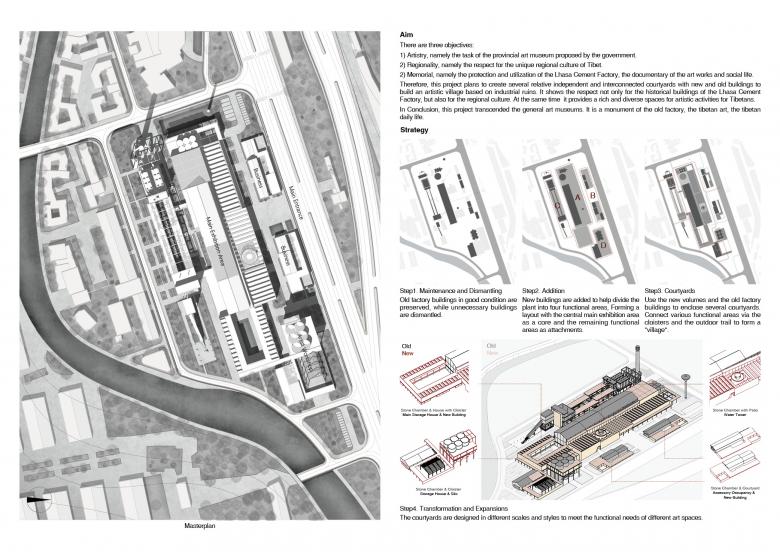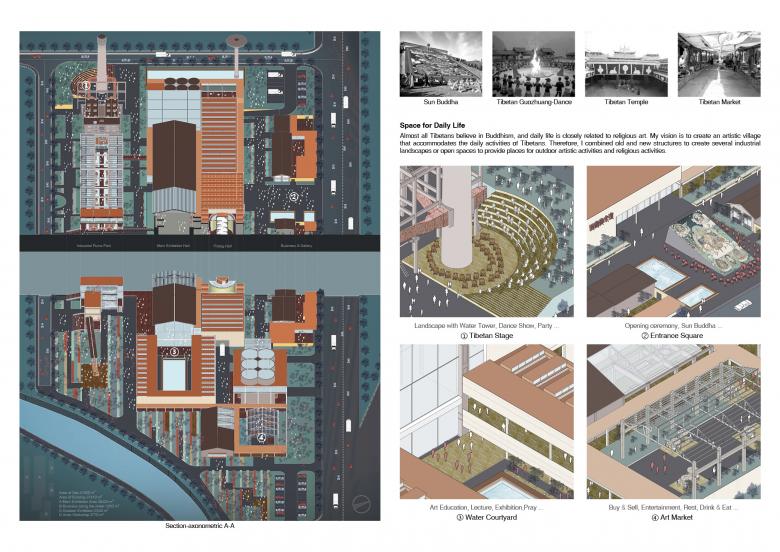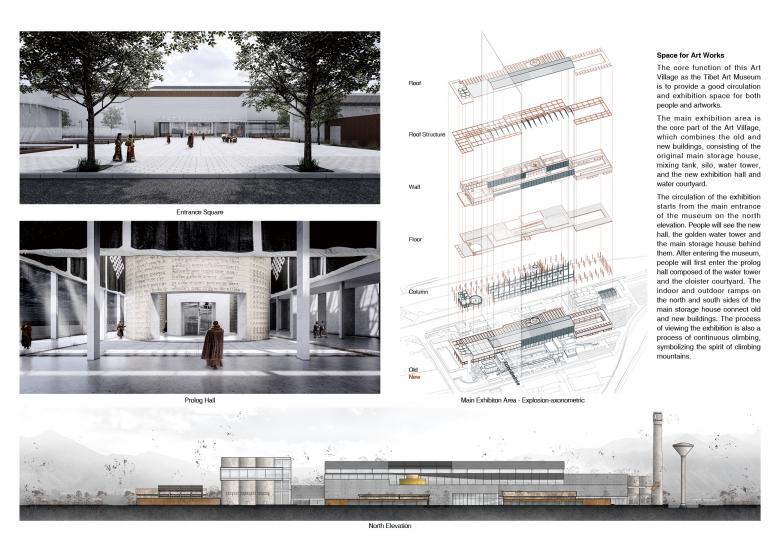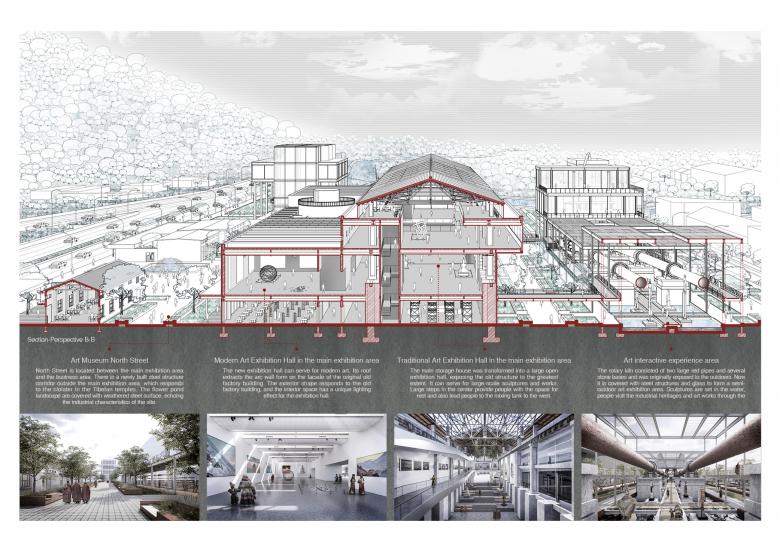Reconstruction of Cement Plant in Lhasa
This project is an transformation of Lhasa Cement Factory into Tibetan Art Museum. It refers to the traditional Tibetan courtyard architecture, creating an artistic village with a series of courtyards formed by new and old structures, providing Tibetans with space for art exhibition and daily activities.
What are the challenges and opportunities for building an art museum in Tibet which is an area with strong regional culture, meanwhile on an Cement Factory which contribute for the city development? This project aims to take advantage of the old factory buildings to create unique exhibition spaces. Furthermore, it refers to the traditional Tibetan courtyard architecture, creating an art village with a series of courtyards formed by new and old structures. This art museum transcend the general ones. Besides the exhibition spaces, it also provide Tibetans with spaces for daily activities, therefore, the museum has more social significance and humanistic nature.
The site is located at the original Lhasa Cement Factory. It did a large contribution to the city development in the last century. Since Tibet does not have a provincial art museum, the Government plans to transform the Lhasa Cement Factory into Tibetan Art Museum. Tibet has strong regional cultural characteristics. Almost all Tibetans believe in Buddhism, and daily life is closely related to religious art. So it is very meaningful for art museum to record the Tibetan daily life which also serve as an important exhibit. The concept comes from the Zhol Village under the Potala Palace. It is a building group of courtyards, which are the typical forms of Tibetan public architecture. Most of the Tibetan courtyards have the elements - stone chamber (Diaofang), patio, cloister, so that Tibetans have sufficient space for religious activities such as worship and prayer. Referring to the Zhol Village , this project plans to create several relative independent and interconnected courtyards with new and old buildings to build an artistic village based on industrial ruins. It shows the respect not only for the historical buildings, but also for the regional culture. At the same time it provides a rich and diverse spaces for artistic activities of Tibetans. The whole artistic village is divided into four functional areas. Different functional areas have their own courtyards and they are connected by lanes, outdoor catwalks, ambulatories and corridors, creating a free and open artistic village. The core function area is the main exhibition area in the centre, consisting of the original main storage house, mixing tank, silo, water tower, new exhibition hall and water courtyard. The ramps on the both sides of the storage house connect old and new buildings, making the old factory also serve as an art exhibits to be visited. In Conclusion, this project transcend the general art museums. It is a monument of the old factory, the Tibetan art, the Tibetan daily life.
